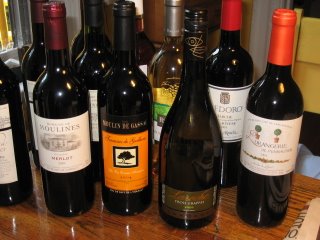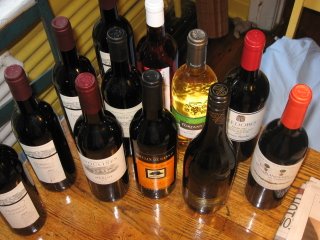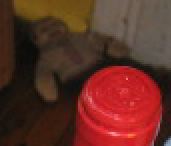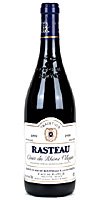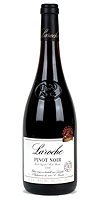The pioneer of Languedoc-Roussillon value wines: Vin de Pays
 Anyone who has seen shaky-camera documentary Mondovino will remember the colourful French winemaker named Aimé Guibert. He was the white-haired owner of Mas de Daumas Gassac, and when he was not a blur on film, he was among those ferociously opposed to the enterprising Michel Rolland, the overtaking Mondavi family, and the force of globalization that is perceived to threaten the legacy of wine terroirs.
Anyone who has seen shaky-camera documentary Mondovino will remember the colourful French winemaker named Aimé Guibert. He was the white-haired owner of Mas de Daumas Gassac, and when he was not a blur on film, he was among those ferociously opposed to the enterprising Michel Rolland, the overtaking Mondavi family, and the force of globalization that is perceived to threaten the legacy of wine terroirs.
What the film didn't explicitly recount was (as explained by Jancis Robinson) the following salient tidbit of information: "Aimé Guibert was the first to prove that a French non-appellation wine, labelled merely Vin De Pays de l'Hérault, can be an extremely serious, long-living red which can fetch the same sort of prices as a Bordeaux classed growth."
For this, many consider Guibert a founding forefather of today's Languedoc-Roussillon. And though vignerons in almost every corner of France are now producing wine under the vin de pays classification, only Guibert successfully launched the idea that his vin de pays of the Languedoc could be among the most formidable values going. In effect, he served to give a nice push to the already long-existing Languedoc-Roussillon appellations, like Minervois and Fitou. In the years to come, innovative and experimental winemakers would flock to the area.
But about four decades ago, Guibert, who is now 80 years old, undertook important operations that ushered in a major wine movement in the south of France. Because of him and similar-minded vignerons, wine experts noted a renaissance in the region and across most of the Midi. Suddenly Langudoc-Roussillon was tapping its terroirs with renewed enthusiasm -- enthusiasm perhaps not seen since the days of kings and queens in France, who where known at times to pass up claret for Midi red wine.
Others see the movement south-ward as part of the birth of new value in today's wine world. Guibert was responsible for carrying Cabernet to lower latitudes, and in so doing, nurtured and promoted the budding Vin de Pays designation of wine, written VdP for short.
WHY DESIGNATE A WINE AS VIN DE PAYS?
The VdP designation was essential because Languedoc-Roussillon AOC appellations almost entirely forbade the vinification of nontraditional Midi grapes like Cabernet. It, Merlot and other more northern grape varieties forced Midi winemakers to produce under the label of Vin de Pays. This label distinguished it from the appellation system. While VdPs exist outside AOC regulation, they do mirror it somewhat, especially in the way that vin de pays meet quality standards. They should not be seen as a second-class wine. In fact, vin de pays are the creations of some of France's most passionate and leading winemakers.
Yet often the price of a wine classified as a VdP is much less than a top-drawer figure. And that is a win-win situation for wine lovers who like discovering new bottles and, who, increasingly, have an eye on sampling wine from ambitious new producers who align themselves in a commitment to fine wine-making that requires them to operate outside the strict limitations imposed by AOC regulations.
Outsiders to the wine world may have begun establishing their good names in the 1970s with vin de pays bargains, but these days those bargains are not necessarily cheap. Can $50 be called a bargain? Perhaps it can -- who can say until one has tried what's inside the bottle with the impressive price tag? A top Gassac wine from Guibert fetches at least that much these days. Same for Rothschild wines that sell under the Vin de Pays de l'Aude designation.
But then those are just two weighty VdP wines that have made wine history. Vin de pays are so much more than that.
Next: Vin de Pays, part two


